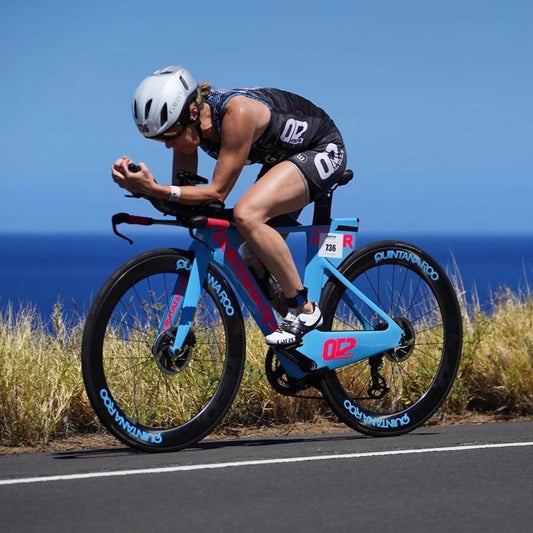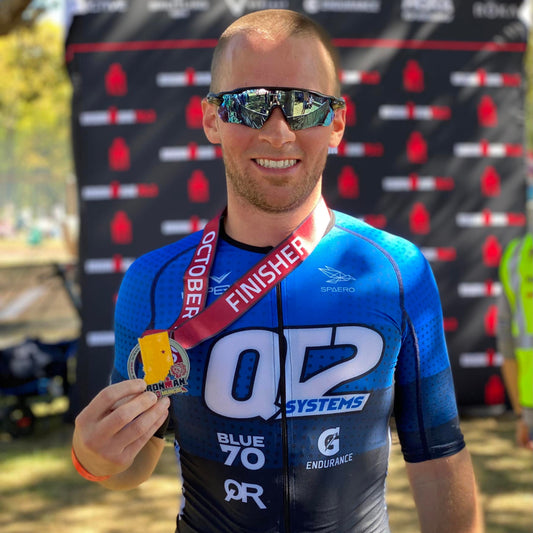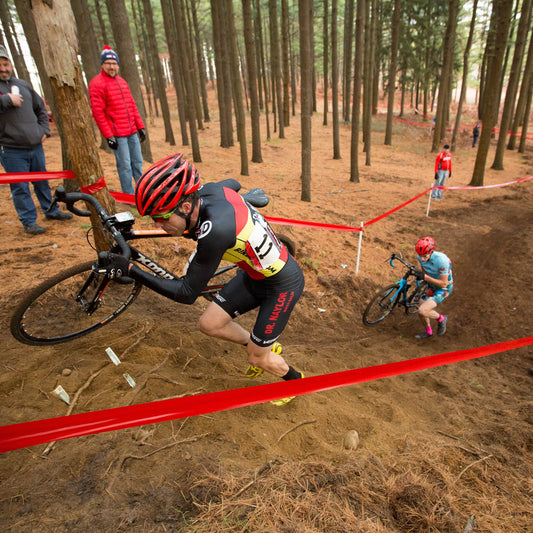Productive Goal Setting
"Goals"----What are they? You hear them all the time in training circles and forums throughout the triathlon community. There are various opinions that mean many different things to different people. A common definition is: "The purpose toward which an endeavor is directed; an objective". This writing is targeted at taking a more structured approach to goal setting that will help drive your short term and long term progress. First off, here are the "buckets" I like to use to better describe the structure:
"Objectives" - examples under this bucket are: "I am going to be tough", "I am not going to give up, no matter how hard things get", "I am going to follow my pacing plan", "I am going to follow my fueling plan". These are best described as those items over which you have 100 percent control.
"Targets" - examples here are: "I am going to average 250 watts on the bike" , "I am going to produce a very even power profile", "I am going to run 7:45 pace on the run". These are items you have a bit less control over, but are directly related to your training, and therefore can be predicted very closely prior to race day. Running pace and swim pace obviously have the course specifics factored in as well and are therefore a bit less tangible.
"Outcomes" - examples here are: age group or overall placing, race time, kona slot qualification, etc. These are items that you have the least control over, and are really just an outcome of the previous two buckets.
Big Picture
When looking at "goals" in this structure, priority should be given at the top of the list (those items you have control over) and reduced as you work towards the bottom. Equally as effective is to look at these in series, as: Objectives->Targets->Outcomes. Unfortunately, many athletes place top priority on the outcomes, over which they have the least control. They determine their targets according to what they must do to achieve the desired outcome. Ultimately, these folks have a much tougher time reaching their race outcomes and spend half of their season disappointed in themselves because they "didn't beat Mary Jane on the bike". This is as an unhealthy mental pattern for athletes of all abilities.
Athletes tend to be most upset when they do not meet their desired outcomes, when they should be far more displeased by not meeting their objectives, since these are the items they have significantly more control over. When focus is given to the objectives and targets, the outcomes are typically there, as a result. Most athletes need to begin with focus on the objectives and slowly incorporate targets, moving towards outcomes as they develop as athletes.
Unfortunately, many athletes start out by saying "I want to qualify for Kona this season, what do I have to do" without even knowing if this is a reasonable outcome. My focus is more on whether or not they have the ability to be tough; can they execute their race plan, time and time again; do they have the "targets" (based on there training) required to make that goal outcome (qualify for Kona) a reality.
Micro Perspective
The previous section addressed my structure, explained what it means, and the best way to approach these from a macro perspective. This section addresses how these same buckets can be used on race day or during tough training sessions at the micro level.
When the gun goes off on race day, many people don't truly know what they are capable of in terms of performance (they don't have realistic targets and instead execute their race guided by what they would like their outcomes to be). As a result, many folks over pace the day by going out too hard, and then end up physiologically fried later in the day. This over pacing issue typically interrelates with having trouble handling the nutrition required to properly fuel the body. These two issues typically combine to provide many walkers out on the course late in the day.
On race day, you may find yourself saying "I should be going faster today, Joey just passed me. I'm 5th in my AG when I want to be 3rd". This is a negative mental pattern and at the bottom of my list from the last section……"Outcomes". If you find yourself thinking like this on race day, very quickly redirect your thoughts to the top of the list. That is, "I'm being tough, I'm following my pace plan, I'm following my fueling plan"…"Objectives". Once you establish that corrected thought process and feel that you are able to execute it, then move to your targets……"How is my wattage compared to where I expect it to be?" "How is my pace, compared to where I expect it to be, based on what I have done in training?"…"Targets".
Race day (during the event) is not the time to consider the outcomes bucket unless you are at a VERY high level (top 10 at Kona), or are in the closing miles of an event where you may be "mano-a-mano" with another racer. 99% of the time, it is only worth considering the outcomes bucket once you have crossed the finish line. Even then, it should be approached only with caution, and really taken with a grain of salt, if all of the objectives and targets were met that day. As you sit down and review the successfulness of your race, begin by first considering the objectives (was I tough, did I execute the race fueling plan), then move to your targets (how was my wattage, how was my pace), and lastly the outcomes (where did I place, what was my time). Again, if the objectives and targets were met on a particular day, it was a success…take the outcomes very lightly, and never beat yourself up over them.
I hope this "goals" post hits home with everyone toeing the line for a big race, who have high hopes. Objectives->Targets->Outcomes! Keep these in mind, and it will help to avoid over pacing the early portion of the event, and ending up disappointed, after making tremendous sacrifices in training. Remember, training is just one of 4 tires on the car (training, nutrition, race fueling, race pacing). If any one of those tires is missing, it won't go forward so well…keep your approach as holistic as possible!
-Jesse





